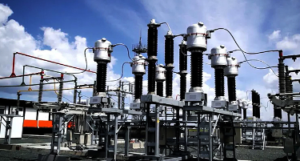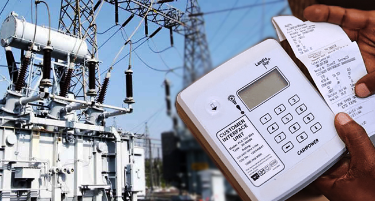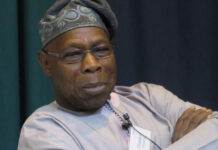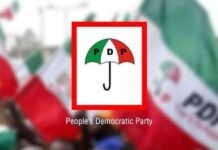The Federal Government of Nigeria spent over ₦633.30 billion on electricity subsidies in the first quarter of 2024, according to findings from the Nigerian Electricity Regulatory Commission (NERC). This expenditure represents a substantial 150.5 percent increase from the ₦252.76 billion spent in the final quarter of 2023.
The report revealed that the amount disbursed in just the first three months of 2024 is higher than the total of ₦628.61 billion that was paid throughout the entire year of 2023. This significant rise in subsidy payments underscores the growing financial burden on the government as it seeks to manage the country’s electricity sector amidst ongoing challenges.
A detailed breakdown of the ₦633.30 billion subsidy payment shows a progressive increase over the quarters of 2023. In the first quarter of 2023, the subsidy amounted to ₦36.02 billion, which then escalated to ₦135.23 billion in the second quarter.
The third quarter saw a further increase to ₦204.6 billion, culminating in the ₦252.76 billion recorded in the fourth quarter. This upward trend reflects the escalating costs that the government has had to bear due to its electricity subsidy program.
The NERC attributed this substantial increase in subsidy payments to several factors. One of the primary reasons is the government’s policy to harmonize exchange rates, which has had a ripple effect across various sectors, including electricity. Additionally, the absence of cost-reflective tariffs across all electricity distribution companies (DisCos) has exacerbated the situation.
Without these cost-reflective tariffs, the prices paid by consumers do not fully cover the costs of electricity generation, transmission, and distribution, leaving a significant gap that the government has to fill through subsidies.
The report also highlighted the ongoing financial strain on the electricity sector, particularly concerning revenue collection by the DisCos. In the first quarter of 2024, the total revenue collected by the DisCos was ₦291.62 billion, which falls short of the ₦368.65 billion billed to customers during the same period. This revenue shortfall further complicates the financial landscape of the electricity sector, adding to the challenges faced by the government in managing subsidies.
The report provided a detailed analysis of the performance of various DisCos in terms of revenue collection. Ikeja DisCo emerged as the top performer, collecting ₦57.88 billion in the first quarter, followed closely by Eko DisCo with ₦48.74 billion. On the other hand, Yola DisCo recorded the lowest revenue collection at ₦5.46 billion.
This disparity in revenue collection among the DisCos highlights the uneven performance across different regions, which may be influenced by factors such as customer base, tariff structures, and operational efficiencies.
 Other notable figures in revenue collection include Abuja DisCo, which collected ₦48.60 billion, and Ibadan DisCo, which garnered ₦30.35 billion. Benin DisCo and Enugu DisCo collected ₦22.46 billion and ₦21.24 billion, respectively, while Port Harcourt DisCo recorded a collection of ₦20.39 billion. The report also noted the revenue collections of other DisCos: Kano DisCo at ₦13.62 billion, Jos DisCo at ₦13.29 billion, and Kaduna DisCo at ₦9.60 billion.
Other notable figures in revenue collection include Abuja DisCo, which collected ₦48.60 billion, and Ibadan DisCo, which garnered ₦30.35 billion. Benin DisCo and Enugu DisCo collected ₦22.46 billion and ₦21.24 billion, respectively, while Port Harcourt DisCo recorded a collection of ₦20.39 billion. The report also noted the revenue collections of other DisCos: Kano DisCo at ₦13.62 billion, Jos DisCo at ₦13.29 billion, and Kaduna DisCo at ₦9.60 billion.
In addition to the financial aspects, the report also touched on the energy efficiency of the DisCos. The total energy received by all DisCos during the first quarter was 7,171.93 GWh, while the energy billed to end-use customers was 5,769.52 GWh. This results in an overall billing efficiency of 80.45 percent, indicating that a significant portion of the energy supplied does not get billed to customers, either due to technical losses, theft, or other inefficiencies.
The findings of this report underscore the ongoing challenges facing Nigeria’s electricity sector, particularly concerning the financial sustainability of the current subsidy regime. The government’s significant expenditure on subsidies highlights the need for urgent reforms, particularly in implementing cost-reflective tariffs that would reduce the reliance on government support. However, such reforms are likely to be complex and politically sensitive, given the potential impact on electricity prices for consumers.
As the government continues to navigate these challenges, the sustainability of the electricity subsidy program will remain a critical issue. Balancing the need to provide affordable electricity to citizens while ensuring the financial viability of the electricity sector will require careful policy decisions and effective management.
The first quarter of 2024 has already seen a substantial financial commitment from the government, and how this trend evolves in the coming months will be closely watched by stakeholders in the sector.




